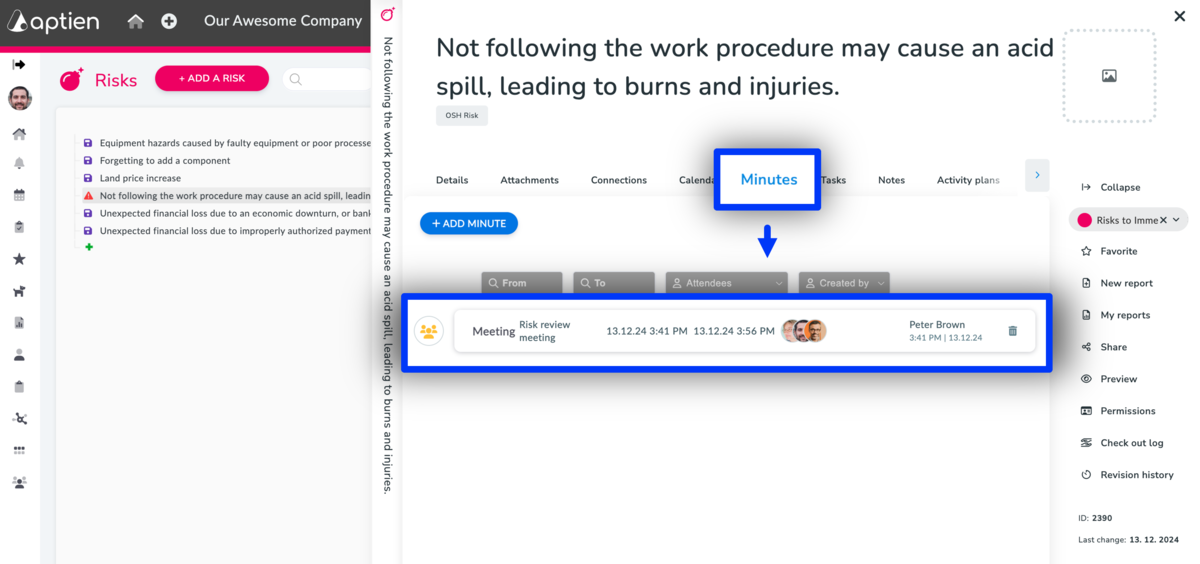What is a Risk Reassessment Review Process?
Risk reviews are an essential part of the risk management process. Risks need to be regularly updated as both internal and external conditions change. Reassessment of risks is crucial for staying up-to-date. Regular risk review meetings help manage associated risks before they occur.
Goals of a Risk Review
- Reassess Risks: Evaluate risks according to the current situation and conditions.
- Identify and Prioritize New Threats: Recognize and rank potential new threats.
- Reassess Impact and Likelihood: Reevaluate the impact and probability of occurrence.
- Evaluate Mitigation Measures: Assess existing risk mitigation measures and develop enhanced strategies where necessary.
- Facilitate Collaboration: Build consensus and collaboration among stakeholders to align risk management efforts with organizational goals.
Topics, Agenda, and Structure of a Risk Review Meeting
- Risk Identification: Allocate time to identify and document potential risks across various facets of the organization.
- Risk Analysis and Evaluation: Conduct in-depth discussions to assess the impact and likelihood of identified risks.
- Mitigation Strategies: Brainstorm actionable measures to mitigate the identified risks.
- Risk Monitoring and Reporting: Establish mechanisms for continuous monitoring and reporting on the identified risks.
Key Questions for Risk Review
- Does the risk still exist?: Confirm if the risk is still relevant.
- Does it have the same impact?: Reassess the impact of the risk.
- Does it have the same probability?: Reevaluate the likelihood of the risk occurring.
- Are our mitigation measures still valid and effective?: Ensure that current mitigation strategies are still appropriate and effective.
Organizing Risk Review Meetings
Risk review meetings are essential for re-evaluating actual conditions that could impact your business. These meetings bring together the risk owner and key stakeholders to leverage their collective expertise and perspectives. The main goal is to proactively reevaluate current state and develop actionable responses based on the current situation.
How Often Should You Hold Risk Review Meetings?
The frequency of these meetings depends on several factors:
- Industry Nature: High-risk industries may need more frequent meetings.
- Regulatory Requirements: Compliance-driven businesses should schedule regular sessions to stay compliant.
- Company Changes: During significant changes or expansions, more frequent reviews are necessary.
After the Risk Assessment Meeting
- After the risk review meeting, the risk owner will document all conclusions in the meeting minutes and update the risk record.
- This includes updating risks, probability-impact scores, and responses in the risk register (note that only high-risk scores have responses).
- Any newly identified risks will also be added to the risk register.
